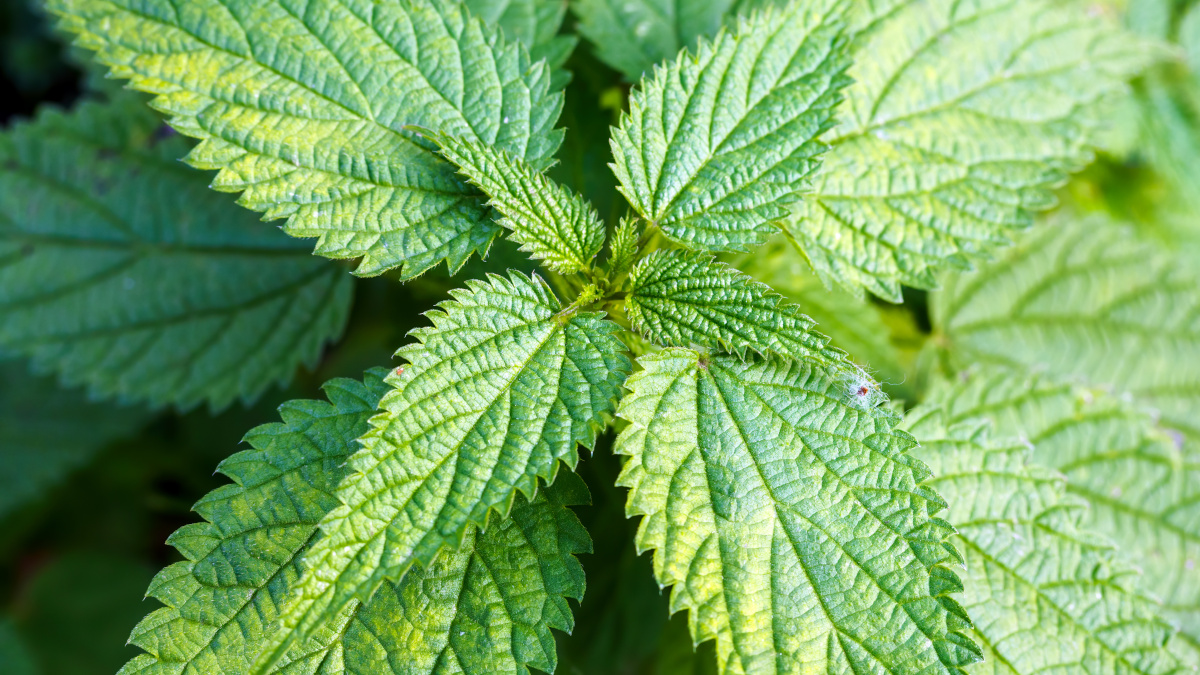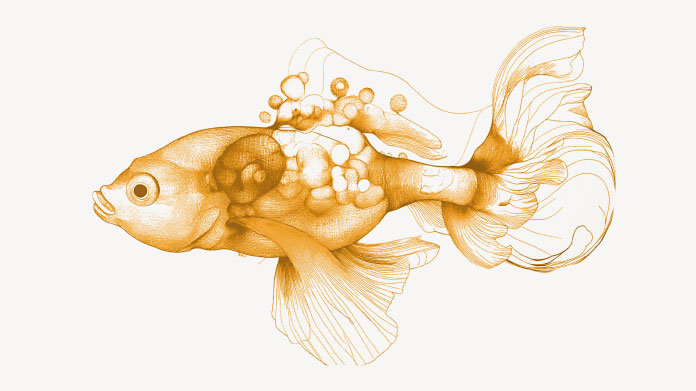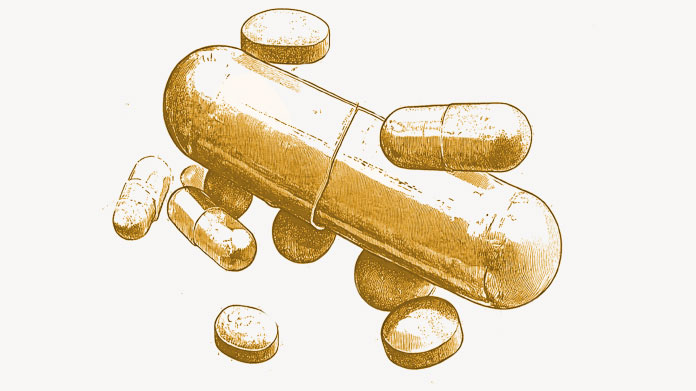Health: the impressive benefits of nettle supplements
Nettle is a plant that grows abundantly along country lanes. Your bare legs may not appreciate being stung by it, but nettle is actually full of health virtues when you know how to use it .... Discover its benefits now.

What exactly is nettle?
Nettle Urtica dioica, also known as stinging nettle, or common nettle, is a hairy-leaved plant from the Urticaceae family. Between 50cm and 1m in length, it is very common in Europe and is used in various forms.
While gardeners often make a nettle slurry to apply as an insect repellent, many people are unaware that it is also used for its medicinal properties.
A plant known by everyone
At some point in our lives, we’ve all fallen foul of nettles, and the memories are painful: burning sensations, itching, blisters. Our grandmas would apply vinegar to the affected area to soothe the pain but the unpleasant feeling would still last for hours.
Nettle’s infamous stinging hairs are actually cone-like outgrowths called trichomes, the points of which break on contact with the skin, releasing formic acid and histamine. To pick nettle without being stung, you simply need to pinch the stem at its base and pull upwards. This way, the trichomes cannot get stuck in the skin.
Since the dawn of time, nettle has been used by herbalists and phytotherapists who have recognised its benefits for health.
But what does it actually contain?
Nettle is full of good things:
- vitamins B, E, C and provitamin A;
- complete proteins (8 grams per 100 grams in fresh leaves);
- iron (7.8 grams per 100 grams) ;
- natural pigments called flavonoids;
- and minerals (potassium, calcium, zinc, magnesium, manganese, silica) (1).
Adding nettle to your diet increases your intake of these elements, all of which help the body function properly, without adding calories. Indeed, this plant has only 82 kcal per 100 grams of fresh leaves.
The benefits of nettle: immunity, respiration, prostate ...
Nettle has many excellent health benefits. It supports:
- the immune system;
- the respiratory system;
- the cardiac system;
- healthy skin, by supporting sebum secretion in particular;
- the osteo-articular system (bones and joints);
- and reinvigoration of the body (2-7).
Nettle also contains substances that promote diuretic function (increased urine production), which is excellent for supporting urine flow in men suffering from an enlarged prostate (8).
How can you incorporate nettle into your diet?
Every part of the plant can be consumed: the leaves, stems and roots. But you still need to know how to prepare them to enjoy their benefits. Here are four different ways in which to consume nettle in order to benefit from its properties:
- in the form of a fresh juice: wash the leaves and stem of the plant and place in a juicer. Drink 5-10ml of the extracted juice three times a day. The juice only keeps for a few hours;
- in the form of a herbal tea made from dried leaves: leave 2-5 grams of nettle to infuse in 150ml of simmering water for 10-15 minutes. Drink a maximum of 500ml of this tea a day;
- as a decoction of dried roots: add 2 grams of dried roots to 200ml of cold water. Bring to the boil, allow to bubble for 1 minute, then remove from the heat. Let it rest for 10 minutes before straining the brew and drinking the liquid;
- as a dietary supplementin the form of capsules (such as the nettle extract in our formulation Inflarelief).
Nettle supplements
Dietary supplements containing nettle are useful for a number of reasons:
- not everyone is able to regularly pick fresh nettles;
- some people are worried about getting stung and so prefer not to prepare nettles themselves;
- and others dislike the taste of nettles, whether in a tea or soup;
- and most importantly, good quality supplements offer a high content of active ingredients.
You can obtain the benefits of nettle by taking a selected synergistic formulation rich in plant extracts (such as the supplement Inflarelief, which combines extracts of nettle, cat’s claw for immunity, ginger for vitality, rosemary, bromelain, etc.)
As mentioned, nettle is also a valuable aid for men suffering from prostate problems. If that includes you (it normally develops after the age of 40), a nettle supplement such as Nettle Root Extract will help to facilitate micturition meaning you have to get up less often in the night to urinate.
For prostate problems, we’d also recommend saw palmetto which also supports healthy urinary function (9), and African plum tree or pygeum, the bark of which is rich in beta-sitosterol and supports the health of the prostate, bladder and lower urinary tract (10). Common nettle, saw palmetto and African plum are actually combined, along with other compounds, in specific formulations (such as ProstaNatural Formula).
References
- Rutto LK, Xu Y, Ramirez E, Brandt M. Mineral Properties and Dietary Value of Raw and Processed Stinging Nettle (Urtica dioica L.). Int J Food Sci. 2013;2013:857120. doi:10.1155/2013/857120
- Dhouibi R, Affes H, Ben Salem M, Hammami S, Sahnoun Z, Zeghal KM, Ksouda K. Screening of pharmacological uses of Urtica dioica and others benefits. Prog Biophys Mol Biol. 2020 Jan;150:67-77. doi: 10.1016/j.pbiomolbio.2019.05.008. Epub 2019 Jun 1. PMID: 31163183.
- Kumaki Y, Wandersee MK, Smith AJ, Zhou Y, Simmons G, Nelson NM, Bailey KW, Vest ZG, Li JK, Chan PK, Smee DF, Barnard DL. Inhibition of severe acute respiratory syndrome coronavirus replication in a lethal SARS-CoV BALB/c mouse model by stinging nettle lectin, Urtica dioica agglutinin. Antiviral Res. 2011 Apr;90(1):22-32. doi: 10.1016/j.antiviral.2011.02.003. Epub 2011 Feb 19. PMID: 21338626; PMCID: PMC3085190.
- Kregiel D, Pawlikowska E, Antolak H. Urtica spp.: Ordinary Plants with Extraordinary Properties. Molecules. 2018;23(7):1664. Published 2018 Jul 9. doi:10.3390/molecules23071664
- https://open.efsa.europa.eu/questions/EFSA-Q-2010-00451
- https://open.efsa.europa.eu/questions/EFSA-Q-2008-3499
- https://open.efsa.europa.eu/questions/EFSA-Q-2008-2885
- Ghorbanibirgani A, Khalili A, Zamani L. The efficacy of stinging nettle (urtica dioica) in patients with benign prostatic hyperplasia: a randomized double-blind study in 100 patients. Iran Red Crescent Med J. 2013;15(1):9-10. doi:10.5812/ircmj.2386
- Kwon Y. Use of saw palmetto (Serenoa repens) extract for benign prostatic hyperplasia. Food Sci Biotechnol. 2019;28(6):1599-1606. Published 2019 Apr 17. doi:10.1007/s10068-019-00605-9
- Ishani A, MacDonald R, Nelson D, Rutks I, Wilt TJ. Pygeum africanum for the treatment of patients with benign prostatic hyperplasia: a systematic review and quantitative meta-analysis. Am J Med. 2000 Dec 1;109(8):654-64. doi: 10.1016/s0002-9343(00)00604-5. PMID: 11099686.
Keywords
12 Hours
Great product
Great product, but still evaluating its effectiveness. Highly recommended. Super efficient delivery.
Chalise
4 Days
Quality products
Quality products , efficient and effective customer service. You can’t ask more
CLaudia
10 Days
Good quality product and customer service.
So far, I'm liking this product, and the customer service was very good.
ELZL
17 Days
The products I use are excel·lent
The products I use are excel·lent
ROSAS Josep Maria
25 Days
Delivery is prompt and I never saw a…
Delivery is prompt and I never saw a quality problem with the manufacturing. It is not possible to assess efficacy on a personal basis, since too many factors come into play. Efficacy can only be assessed statistically with a sufficient number of cases.
Roger De Backer
26 Days
I collaborates with the Supersmart…
I collaborates with the Supersmart more than 10 years. Every thing is going good. Quality of the things is good. Delivery comes in time. Five stars definitely !!!
Oleksiy
26 Days
All good
Simple, frictionless site, easy ordering, good delivery updates and execution.
Chris Robbins
28 Days
I feel better
I feel better
Peter Ammann
28 Days
Prompt delivery
Prompt delivery
JAKUB Radisch
29 Days
My new go-to for top quality supplements!
I am buying more and more of my supplements from this superb, high quality company. Cannot recommend it enough. Plus, excellent customer service with a quick, helpful team and speedy deliveries. Highly recommend Supersmart!
Cecilie H.
33 Days
SUPERSMART WHAT ELSE👍
SUPERSMART WHAT ELSE👍
DIEDERLE Christophe
36 Days
Excellent quality products with…
Excellent quality products with innovative formulas, as someone who has been suffering with acid reflux, these supplements have been lifesavers.
Oriana Moniz
36 Days
high quality supplement!
high quality supplement!
GALANT
37 Days
Good service prompt delivery
Good service prompt delivery
Mrs Marcella Reeves
42 Days
I like your clear explanation
I like your clear explanation. And how to make a choice of products for a specific health problem
Ingrid



